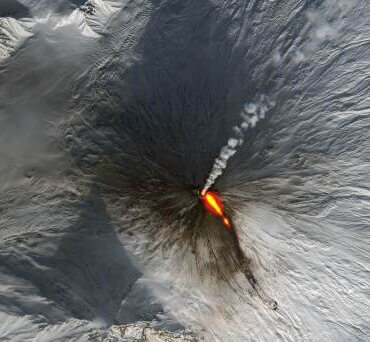
Klyuchevskaya, October 2020. Pierre Markuse, CC BY 2.0
Last week was an eventful one for the Pacific region, marked by significant geological and oceanic activity. The sequence of events began with a powerful earthquake, followed by a tsunami, then a Russian volcano made an appearance.

Kamchatka Krai, Russia. Photo: Yaroslav Shuraev. pexels.com
At 11:25 am on July 30 (New Zealand time), a magnitude 8.8 earthquake struck off the coast of Kamchatka, Russia, within the active Kuril-Kamchatka subduction zone. This is a significant seismic event, clocking in as the largest since the 2011 Mw 9.1 Tohoku earthquake that triggered a devastating tsunami. It can be chaos trying to find good information during large and complex events like this one, so here are a few sources that can be helpful to save for next time.

Janine Krippner
For events that could impact us in Aotearoa, our own local agencies should always be where we turn for information and advice. That said, there are also some helpful international agencies that provide trustworthy information and context.
For information on earthquakes, earthquake.usgs.gov is an excellent resource. During significant events like this one, they do a great job of summarizing what happened. They also give aftershock forecasts, which estimate the likelihood of additional quakes within the following week, across a range of magnitudes.
For tsunamis in the Pacific Ocean, the international Pacific Tsunami Warning Center (PTWC) will post tsunami Advisories. However, it is critical that we follow our own local Civil Defence advice for tsunamis. The strong currents associated with tsunamis alone can be dangerous or deadly and should never be underestimated.
This event is a good reminder that a tsunami is not a normal wave like we see at our beaches, and it is also not a tidal wave. A tsunami is a set of powerful surges that can carry vast amounts of water and debris inland, then back out to sea. This series of waves often occurs over hours, and the largest wave might take a while to reach your location. This is why it is essential to follow advice until an advisory is formally lifted.

Klyuchevskaya, October 2020. Pierre Markuse, CC BY 2.0 <https://creativecommons.org/licenses/by/2.0>, via Wikimedia Commons
In the aftermath of the earthquake, headlines quickly circulated claiming it had triggered a volcanic eruption. Klyuchevskoy, the volcano in question, is actually one of the more frequently active volcanoes in Kamchatka. I’ve been fortunate enough to see in person, and its activity is not unusual. The current eruption episode started in April, so no, the earthquake did not trigger a new eruption. There are a lot of active volcanoes in Kamchatka, so having several ongoing eruptions at any given time is normal.
A great place to fact-check volcanic activity like this is the Smithsonian Institution Global Volcanism Program, where eruption dates and descriptions are available in one handy place. Claims of a large earthquake triggering an eruption are common during these events, and it is almost always a volcano that has been erupting for quite a while.
Thankfully, this was not a repeat of the 2004 Boxing Day tsunami or the 2011 Tōhoku tsunami, both of which caused catastrophic devastation and tragic loss of life. Still, it serves as a powerful reminder that we live on a geologically active planet, and that events unfolding far from our own shores can still have a direct impact on us.

Kamchatka Krai, Russia. Photo: Anna Shvets. pexels.com








